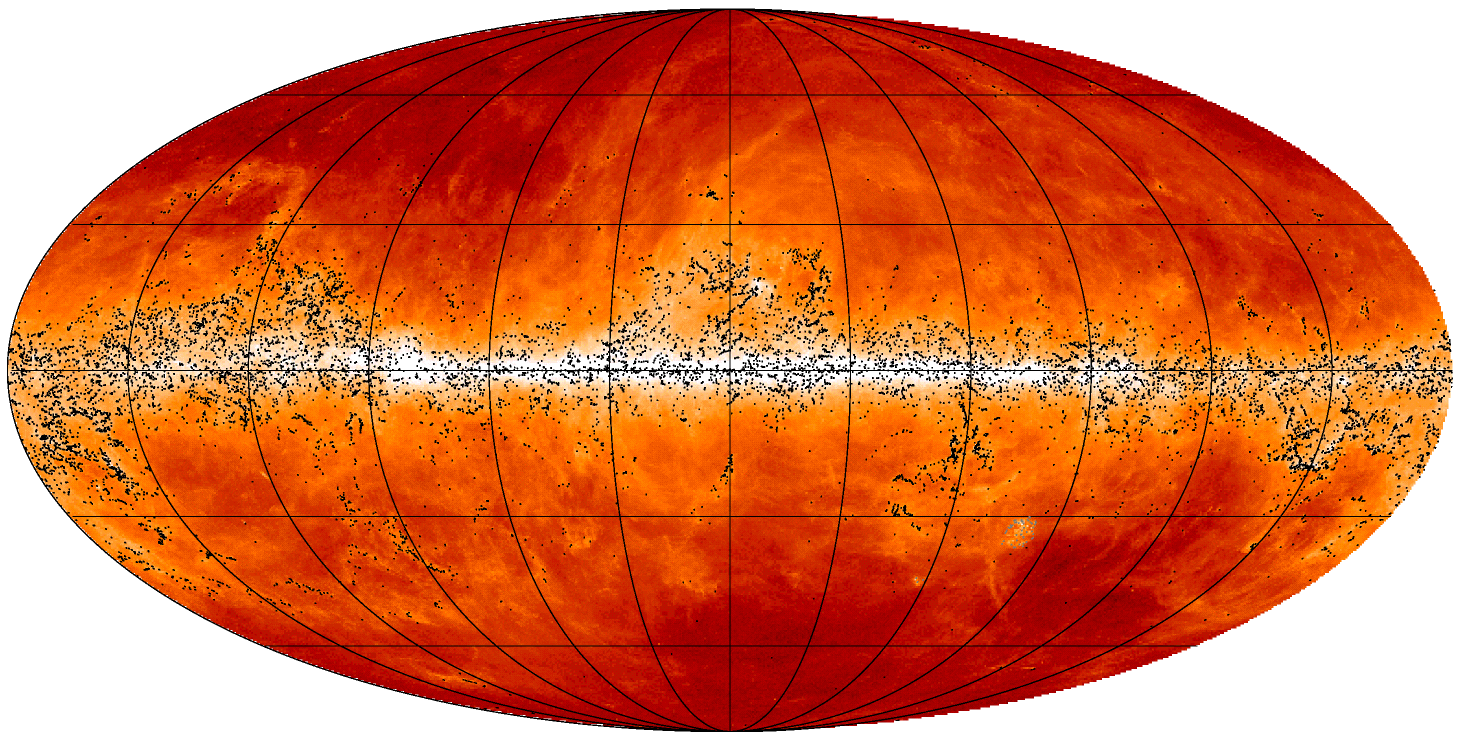Orsolya Fehér
Konkoly Observatory, Budapest, Hungary
Momentum Disk Research Group
PI: Ágnes Kóspál
PhD candidate at Eötvös Loránd University, Budapest, Hungary
supervisor: L. Viktor Tóth
Interstellar Material and Early star formation on large and small scales
RESEARCH TOPICS
- star formation in cold, dense galactic clumps discovered by Planck and mapped by Herschel
- physical parameters, kinematics and stability from dust continuum and molecular line emission
- description of star forming activity in clumps (AKARI, WISE)
-
mass accretion and eruption process in FU Orionis-type, low-mass, eruptive young stars
- millimeter interferometric mapping of the continuum and a number of molecular species/transitions with ALMA, NOEMA, JCMT, APEX
- tracing the envelope and the envelope/disk interface
- morphology, kinematics, mass transfer
Galactic Cold Cores research team (Herschel Key Programme, PIs: Mika Juvela, Isabelle Ristorcelli)
TOP-SCOPE project (PI: Tie Liu)
Momentum Disk Research Group (PI: Ágnes Kóspál) + SACCRED ERC project (PI: Ágnes Kóspál)
INitial conditions of star formation

Planck: > 13,000 dense, cold, potentially star forming galactic structures ("clumps")
--> a possibility to study of the earliest phases of SF on a statistical sample
(the nature of the objects, initial conditions, stages, timeline, environmental effects)
Herschel: high resolution and sensitivity FIR maps of individual regions
credit: L. Montier
STructure of Tmc-1
- dense, filamentary cloud in Taurus
- part of a bush-like group of Planck objects (Heiles Cloud 2) with complex morphology
- high S/N and velocity resolution NH3 observations with the Effelsberg telescope as part of our ammonia survey of cold dense regions spanning several years

Fehér et al. 2016, A&A
- temperature and column density distribution + kinematics --> sub-structures
- close to equilibrium, chemical and dynamical age different
- turbulence increased by an outflow in the main ridge
CO survey of Planck objects
- part of the systematic ground-based molecular emission survey of Planck objects
- correlation of continuum- and line-based densities, temperatures, determination of stability
- 35 clumps observed in two CO isotopologues with the Onsala 20m telescope

- most objects are cold, dense, rare traces of heating
- continuum- and line-based densities correlate well
- kinematic distances, stability
- 2 object groups: close-by, core-sized, low-mass and grav. unbound clumps and massive, parsec-scale clouds farther away

Fehér et al. 2016, A&A
Interferometric view of the envelopes of Fu ori-type stars
- IRAM/NOEMA merged observations of 8 northern FUors (CO and 2.7 mm continuum)
- size, mass, kinematics of envelopes
- process of episodic accretion
- possible evolutionary sequence

- detection of "extended envelopes" on a 10,000 AU scale, clumpy structure
- heated, few 1000 AU envelopes centered on the stars, outflows
- envelope parameters suggest Class I and II sources - "normal" YSOs in a special state?
Fehér et al. 2017, A&A

Ábrahám, ..., Fehér, ..., 2017, ApJ
MASS Transport around V346 Nor
- pilot study for our ALMA project on southern FU Ori-type objects
- CO isotopologues and 1.3 mm continuum with a resolution of ~1" (~700 AU)
- disk/envelope/outflow cavity mapping, mass, kinematics, morphology

- compact continuum, extended CO
- spectro-astrometry: outer pseudo-disk (rotation + infall), inner 350 AU keplerian disk
- the infall rate from the envelope to the disk is a factor of a few higher than the quiescent accretion rate --> mechanism of eruption
Kóspál, ... Fehér, ..., 2017, ApJ

In progress: AMmonia surveys of the galactic cold ISM
- Effelsberg observations 2008-2016
-
~ 40 PGCC mapped NH3(1,1) and (2,2) transitions
(Tóth, ..., Fehér, ..., in prep) -
individual objects studies:
- the double core of G163.82-8.44
(Zahorecz, ..., Fehér, ..., in prep.) -
the clumps of Heiles Cloud 2
(Fehér et al. in prep)
- the double core of G163.82-8.44
- effects of galactic environment on star forming regions (project initiated)
- TOP-SCOPE collaboration: diverse list of Planck objects described with measurements of many molecular species and continuum

In progress, planned and interested in:
-
ALMA study of > 10 FU Orionis-type objects
- CO and continuum mapping to derive physical parameters, see structure and kinematics as started with the study of V346 Nor
- mass infall rate, envelope dispersal process
-
chemical study of FUors with single-dish measurements
- IRAM, APEX
-
resolving the envelope/disk interface with NOEMA
- might reach spatial resolutions close to ALMA
- dynamics of infall
- structure on even smaller scales: disk morphology and parameters, dust and gas composition and evolution, infrared and optical interferometry, the role and possibilities of RT models
- connecting the results of star formation studies on different scales and to environmental effects
Specific skills acquired during my research
- observation and data reduction/analysis experience with several radio telescopes (Effelsberg, Onsala, IRAM, JCMT)
- practiced utilisation of the GILDAS software for single-dish and interferometric data calibration, reduction and analysis
- basic understanding and usage of the CASA package, frequent usage of IDL and python
- writing and planning telescope time proposals as PI and co-I (Effelsberg, IRAM, APEX, ALMA)
-
teaching and tutoring:
- basic astronomy, observational astronomy to BSc students
- supervision of an MSc student summer projects (2016)
- supervision of a BSc student project (2017, 1st prize at the Scientific Students' Associations Conference)
- tutoring of students in our research group (molecular line data reduction and analysis, calculations from Herschel measurements)
- organizing and participating at several workshops, conferences (talks, posters)
- organizing weekly scientific "Coffee Breaks" at the institute
contributions to the work of the disk and planet formation imaging group
- analysis and interpretation of existing data, stating and answering questions, learning and applying new techniques
- experience with ALMA data and radio interferometry, interest in optical and infrared interferometry
- experience with ALMA data and radio interferometry, interest in optical and infrared interferometry
- proposal, preparation and execution of new observations
- presenting and publishing results
- contributing to the planning of new projects
- teaching and tutoring students
- outreach
University of Exeter presentation
By Orsolya Fehér
University of Exeter presentation
- 743


